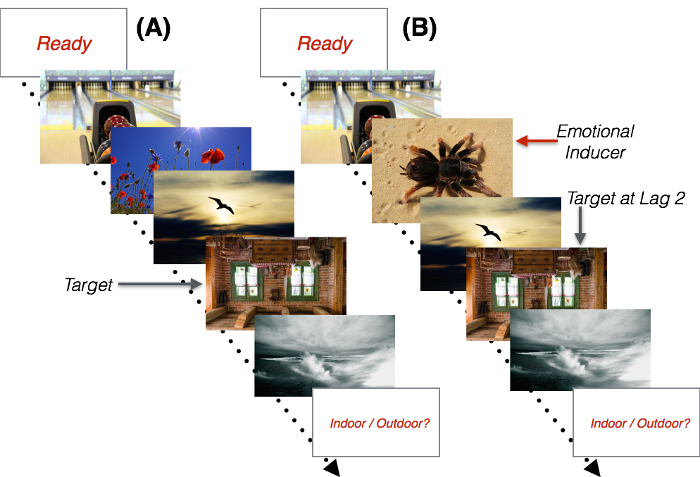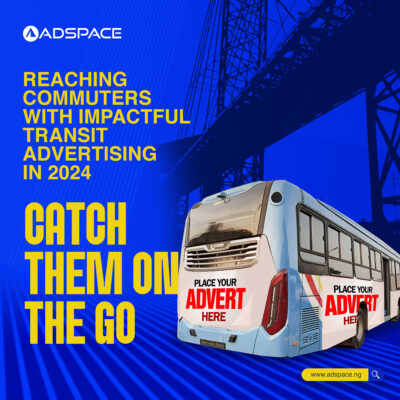Billboard Ad Campaigns Fundamentals
1. The Billboard Renaissance: A Visual Symphony
Billboards, those towering sentinels of the urban landscape, have been captivating commuters and pedestrians alike for decades. But in this digital age, do they still wield the same influence? Let’s delve into the art and science of Billboard Ad Campaigns and measure their effectiveness.
The Billboard Landscape
Billboards are more than mere advertisements; they’re canvases for creativity. From the iconic Coca-Cola signs of yesteryears to the dazzling LED displays that now adorn city skylines, billboards have evolved. They’re no longer static images; they’re dynamic narratives that engage passersby.
In the cacophony of modern marketing, billboards stand tall—literally. Their sheer size commands attention, interrupting the mundane rhythm of daily life. Whether it’s a cheeky slogan, a tantalizing product shot, or a thought-provoking message, billboards beckon us to look up, to pause, and to ponder.
2. Metrics that Matter: Beyond Impressions
The Reach and Frequency Tango

Billboards dance to the rhythm of reach and frequency. Reach measures the number of eyeballs that glimpse your ad, while frequency gauges how often they see it. Striking the right balance ensures your message lingers without becoming a monotonous jingle.
Imagine a bustling highway during rush hour—the billboard stands tall, catching the eye of harried commuters. It’s a fleeting moment, but if that moment repeats, it becomes a memory etched into the collective consciousness. The billboard for a local coffee shop becomes synonymous with morning caffeine, and the luxury car ad whispers dreams of open roads.
The Elusive ROI
Return on investment (ROI) is the holy grail. But how do you measure it when billboards don’t come with click-through rates? Fear not! Geospatial data, foot traffic analysis, and consumer surveys reveal the impact of those colossal roadside canvases.
Billboards are like silent influencers—they don’t ask for likes or shares, but they leave an indelible mark. Did that billboard for the new smartphone prompt someone to visit the store? Did the whimsical mural for a children’s theme park lead to ticket sales? The answers lie in the data, waiting to be deciphered.
3. The Psychology of Billboard Ad Campaigns Persuasion
The Blink Test: Capturing Attention in a Fleeting Moment

Billboards have mere seconds to make an impression. The blink test—where your brain processes an image in a fraction of time—determines success. Bold fonts, striking visuals, and succinct messages pass this test with flying colors.
Think of the last billboard that caught your eye. Perhaps it was the minimalist ad for a fitness center—a chiseled silhouette, a single word: “Transform.” Or maybe it was the quirky billboard for a pet adoption drive—a giant paw print with the tagline: “Find Your Furry Friend.” In those fleeting moments, emotions stir, decisions form, and brand associations take root.
The Power of Repetition: Building Brand Recognition and Trust
Billboards thrive on repetition. The more you see them, the more they infiltrate your subconscious. Remember that quirky jingle? You’ve been indoctrinated!
Consider the billboard for a local real estate agency—it’s strategically placed along your daily commute. Day after day, it whispers, “Dream Home Awaits.” Gradually, it becomes part of your mental landscape. When you finally decide to buy a house, guess which agency comes to mind? Repetition isn’t redundancy; it’s reinforcement.
4. Designing for Impact: Art Meets Science
The Rule of Seven

Seven is the magic number. A viewer needs to encounter your billboard at least seven times before it registers. So, choose colors wisely, craft compelling copy, and let your design simmer in the collective consciousness.
Picture a billboard for a music festival—the vibrant hues, the swirling typography, the promise of euphoria. Each glance adds a layer of familiarity. By the seventh encounter, it’s not just a billboard; it’s an invitation to dance, a passport to escape.
The Curious Case of Negative Space
Billboards aren’t just about what’s there; they’re also about what’s not. Negative space creates intrigue, drawing eyes to the message. It’s the pause in a symphony that makes the crescendo more powerful.
Think of the billboard for a luxury watch brand—a solitary watch face against a vast expanse of white. The emptiness around it amplifies its elegance. Negative space isn’t emptiness; it’s breathing room for ideas to resonate.
5. Location, Location, Location: Strategic Placement for Billboard Ad Campaigns
Urban vs. Suburban Showdown
Urban billboards dazzle with neon lights, while suburban ones whisper in sepia tones. The context matters. A flashy ad for a nightclub belongs in Times Square, not a sleepy village.
Consider the Times Square billboard—a colossal canvas that competes with the city’s skyline. It’s a symphony of color, movement, and energy. Tourists crane their necks, capturing selfies against this luminous backdrop. Here, billboards aren’t mere advertisements; they’re part of the city’s identity. The Broadway show posters, the latest tech gadgets, the fashion-forward brands—they all jostle for attention, creating a visual cacophony that defines New York’s pulse.
Now shift gears to the suburbs. Picture a quiet road flanked by maple trees, their leaves ablaze in autumn hues. The billboard here is more discreet—a local bakery announcing fresh apple pies, a realtor showcasing cozy homes, or a community center inviting you to a pancake breakfast. These billboards don’t shout; they converse. They’re the friendly neighbor waving from the picket fence, inviting you to slow down, take a detour, and savor life’s simple pleasures.
The Commuter’s Dilemma
Billboards along highways are like pit stops for the mind. They break the monotony of asphalt and offer a visual respite. But beware—the commuter’s attention span is fleeting.
Imagine driving along a congested freeway during rush hour. Your eyes dart from lane to lane, navigating traffic. And there it is—the billboard. You have seconds to absorb its message. Is it a restaurant promising the best barbecue ribs? Or an insurance company urging you to secure your family’s future? The billboard competes with billowing exhaust fumes, blaring horns, and the GPS lady’s stern instructions. It’s a battle for attention, and the winner gets etched into memory.
But what if you’re the passenger? Ah, now the billboard has your undivided attention. You’re free to ponder, to wonder, to decode. Is that quirky ad for a pet adoption agency tugging at your heartstrings? Or does the sleek car silhouette make you dream of open highways? The commuter’s dilemma—blink, and you miss it; linger, and you miss the exit.
6. The Digital Disruption: Billboard Ad Campaigns in a High-Tech World
From Static to Dynamic: LED Billboards and Real-Time Advertising
LED billboards change the game. They morph from car ads to weather updates, captivating audiences with real-time relevance. The future is bright (literally).
Picture this: You’re stuck in traffic, and the LED billboard ahead flickers to life. It’s not just a static image; it’s a mini-movie. First, a family picnics under a sunny sky. Then, clouds gather, and raindrops dance. Finally, the sun reemerges, casting a rainbow over a car dealership. The message? “Get your convertible today!” LED billboards adapt to weather, time of day, and even traffic conditions. They’re chameleons, blending seamlessly into the urban fabric.
Interactive Billboards: Engaging or Enraging? The Balancing Act
Touchscreens, QR codes, and augmented reality—billboards now beckon interaction. But tread carefully; a glitchy touchscreen can turn your masterpiece into a meme.
Imagine walking past a colossal screen that invites you to “Swipe left for a surprise!” Curiosity piqued, you swipe. Voilà! A virtual lion roars, and you’re transported to an African savanna. But wait, the swipe doesn’t work. Frustration sets in. You’re no longer engaged; you’re annoyed. Interactive billboards walk a tightrope. When done right, they’re immersive experiences—a makeup brand lets you virtually try on lipstick shades. When done wrong, they’re eye-rolling gimmicks—a frozen yogurt ad that freezes your phone.
7. The Ethics and Responsibility of Billboard Ad Campaigns
Subliminal Seduction or Blatant Bombardment?
Billboards wield immense power. They can nudge behavior or overwhelm senses. Responsible messaging is key. No one wants a guilt-trip on their morning commute.
Consider the anti-smoking campaign—a haunting image of blackened lungs, accompanied by the stark message: “Choose Life.” It’s a gut punch, a wake-up call. But is it ethical? Does it empower or shame? Billboards straddle the line between persuasion and intrusion. They’re public art with a purpose. So, let’s choose wisely—the billboard that inspires, educates, and uplifts.
The Environmental Footprint
Billboards consume energy and resources. Balancing their impact with eco-friendly practices is a challenge. Can we have our billboard and save the planet too?
Think of the electricity powering those LED billboards—the same energy that could light up homes. And the vinyl material that wraps billboards—does it end up in landfills, suffocating the earth? As marketers, we’re stewards of both messages and the environment. Perhaps it’s time for solar-powered billboards or biodegradable wraps. Let’s create ads that don’t just sell products but also respect the planet.
8. The Future of Billboard Ad Campaigns
AI-Powered Billboards
Imagine billboards that adapt to your mood. AI algorithms analyze your expressions and tailor ads accordingly. Creepy or convenient? You decide.
The billboard senses your stress levels—furrowed brows, clenched fists—and switches from car insurance ads to soothing beach scenes. Or maybe it detects your excitement—wide-eyed wonder—and showcases the latest gadget. AI isn’t just artificial; it’s intuitive. But tread lightly; privacy concerns lurk in the shadows.
Holographic Billboards: The Sci-Fi Dream
Holograms that leap out of billboards—Star Wars style. The future is holographic, and it’s coming to a highway near you.
Picture this: You’re driving, and suddenly, a shimmering dragon materializes, wings flapping, scales gleaming. It’s not an illusion; it’s a holographic ad for a fantasy movie. Or maybe it’s a holographic menu outside a restaurant—the sizzling steak, the bubbling pasta—all in 3D splendor. Holographic billboards defy physics, bending light and bending minds. Buckle up; the future is here.
9. Conclusion: Billboard Ad Campaigns Alchemy
Billboards are more than ads; they’re alchemical transformations. From mundane messages to magical moments, they shape our urban narrative. So, next time you pass one, remember: it’s not just a sign; it’s a symphony.
FAQ
Q: Are billboards still relevant in the digital age?
A: Absolutely! While digital ads dominate screens, billboards hold their ground. They’re tangible, unskippable, and part of our daily commute. Plus, they’re Instagram-worthy—#BillboardGoals, anyone?
Q: How do billboards impact local businesses?
A: Billboards can be a game-changer for local businesses. Imagine a mom-and-pop bakery—their billboard announces fresh cinnamon rolls. Suddenly, the neighborhood knows where to satisfy their sweet cravings. Billboards build community connections.
Q: What’s the weirdest billboard you’ve seen?
A: Ah, the “Aliens Welcome” billboard on a deserted highway. It had blinking lights and cryptic symbols. Conspiracy theorists rejoiced; tourists posed for selfies. Turns out, it was an art project. But for a moment, it blurred reality and imagination.
Q: Can billboards be art?
A: Absolutely! Think of the iconic “I Love NY” billboard—a simple heart and letters. It’s become synonymous with New York itself. Art transcends galleries; sometimes, it’s 20 feet tall and zooming past on the freeway.
Q: What’s the future of billboards?
A: Brace yourself for AR billboards—where Pikachu dances on your dashboard. And who knows, maybe billboard graffiti will be a thing—virtual spray cans, anyone? The future is a canvas waiting to be painted.
Thank you for joining our billboard journey. Keep your eyes peeled; the next billboard might just change your world












